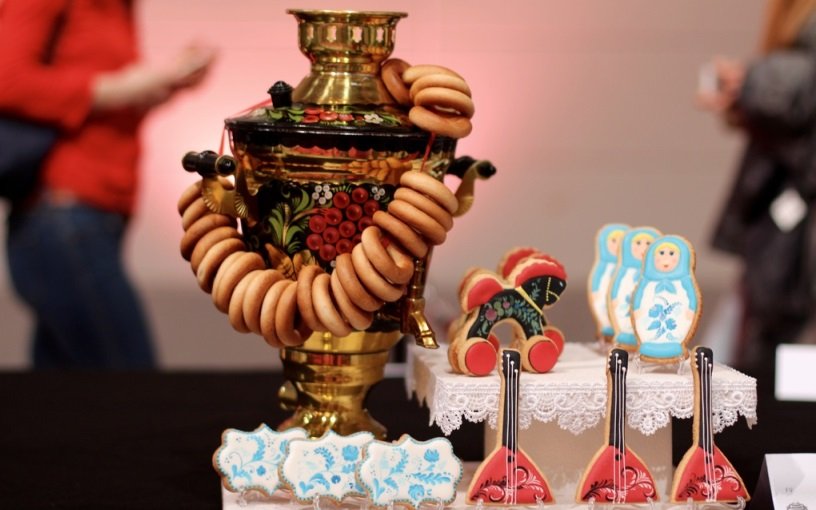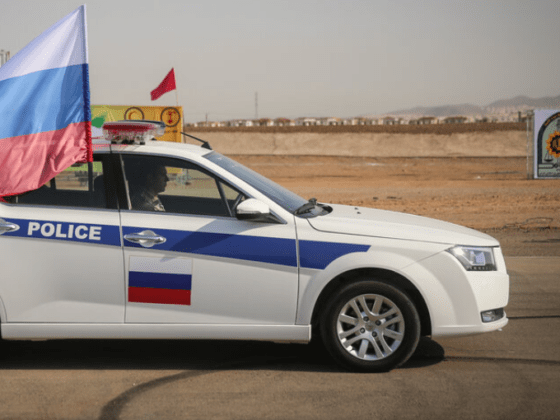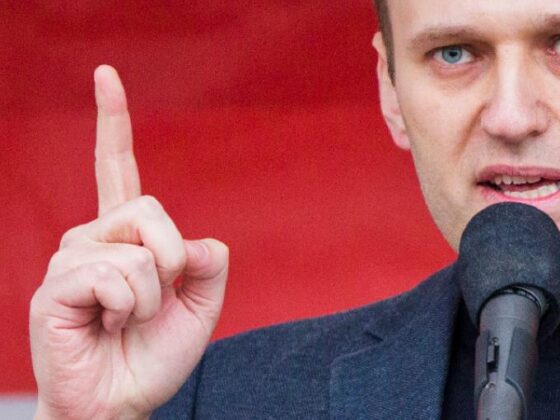(PONARS Eurasia Policy Memo) In late 2020, food prices and the Russian citizens’ access to staple foods have emerged as one of Putin’s main concerns. Over the last year, the price of pasta went up by 10 percent, sunflower oil by 24 percent, and sugar by more than 70 percent. Even prior to the COVID-19 pandemic, an average Russian family spent about 40 percent of its budget on food, four times more than an American family did. Russians, especially outside the major cities, are hurting. The problem has not yet led to open discontent and protests, but the regime is clearly worried.
At the same time, while Russian citizens are tightening their belts, the country’s agriculture is thriving. Since President Vladimir Putin came to power in 2000, Russia’s agricultural sector has experienced a quiet, largely overlooked yet remarkable transformation. Russia is currently the world’s largest exporter of grain and a major exporter of meat. Paradoxically, both the phenomenal boom of Russian agriculture and the food price crisis stem from the same source: Putin’s view of food as a political, security rather than economic issue.
Food Prices are Rising, and Putin is Upset
On December 9, 2020, during a Zoom Internet discussion with state officials, Putin devoted a considerable portion of his remarks to the quickly rising food prices in the country. The Russian president complained bitterly that for many Russians, even staple foods are now out of reach. The reason, according to Putin, is not the COVID-19 pandemic but the attempt by retailers and producers to bring domestic prices closer to the higher global ones. Several days later, on December 13, Putin ordered the government to fix the problem in one week and publicly berated Minister of Economic Development Maxim Reshetnikov for allowing the situation to get out of control. On December 17, during Putin’s annual press conference, he twice addressed the issue of skyrocketing food prices.
After the widely publicized dressing down, the government leaped into action. On December 11, the office of the Prosecutor General started investigating food prices throughout the country. On December 16, the government introduced price caps on sugar and sunflower oil until April 1, 2021. Another official initiative envisions a long-term mechanism to regulate the costs of staple, or as the Russian government describes it, “socially important” food products.
Putin’s actions, which came just before Russians embarked on the holidays’ food shopping spree, were clearly meant to promote the president’s image as the “good czar” and to signal his concerns for the wellbeing of ordinary citizens. This image is especially important given Russians’ declining real incomes and the subsequent dip in Putin’s popularity. But choreographed and public relations actions aside, the problem is very real indeed, and the governed have good reasons to be concerned.
Historically, Food Supply is Russia’s Achilles Heel
Despite possessing rich agricultural lands, the Russian Empire and the USSR were historically vulnerable to food shortages. The February 1917 Revolution that toppled the Romanov dynasty was ignited by food shortages in Petrograd (now St. Petersburg), Putin’s hometown. The Soviet Union suffered a succession of devastating famines in the 1920s, 1930s, and 1940s in which millions perished. When the United States introduced sanctions against the USSR after its invasion of Afghanistan in 1979, a grain embargo was the central component of American measures precisely because the Soviet Union was dependent on U.S. grain to feed its citizens. As a result, the Kremlin was forced to hastily find alternative suppliers to prevent Soviet citizens from running out of food. The widespread food shortages, long breadlines, and rationing of staple food products such as sugar in the late 1980s discredited the communist system in the eyes of the population.
Initially, post-Soviet Russia fared no better. In his memoir, Yegor Gaidar, the architect of the market reforms, describes the country as being on the brink of famine and nearly escaping a “food catastrophe” in late 1991 and early 1992. For Gaidar and other reformers, the only viable long-term solution to Russian food vulnerabilities was an open market. According to this vision, Russian farmers, liberated from the yoke of collective and state farms, would grow what is profitable, and the rest would be imported from abroad.[1] An agrarian reform, which came under the purview of Vice President Alexander Rutskoi, failed to materialize and was quietly shelved when Rutskoi became the leader of armed anti-Yeltsin opposition in 1993. Domestic agricultural production collapsed, and previously cultivated lands were abandoned at rates that made some scholars speculate whether the Russian peasantry is headed towards extinction as a social class. Yet, at the same time, a combination of small-scale agriculture on family-owned garden plots (dacha), imports, and foreign aid—the famous Bush legs[2]—provided Russians with access to food during the economic transformation of the 1990s. Russian agriculture began to rebound in the mid-1990s, but even as late as 1998-99, a combination of a bad harvest and an economic downturn forced the Russian government to request urgent humanitarian food aid from the West.
The Putin Years: Food as National Security
When Vladimir Putin came to power in 2000, the Russian government’s laissez-faire approach to agriculture and food supply ended, and self-sufficiency became a conscious long-term strategy. Instead of allowing open market mechanisms to take care of the country’s food provisioning, the government started strategically investing in domestic food production. This approach centered on several mechanisms. First, agricultural producers, especially the emerging large agricultural firms, the so-called agroholdings, were provided with long-term low-interest loans financed by the state. Second, the government-subsidized the transportation of grain by Russian Railways (RZhD). Third, the government incentivized and directly invested in grain storage facilities and transportation infrastructure projects.
As a result of these combined efforts, old tractors gave way to new foreign harvesters, and abandoned ports of the Volga-Don canal became alive again. In a span of several years, the country switched from importing grain to being a key exporter. When in 2010 Russia suffered a severe drought, Putin did not need to ask for external help, domestic consumption was secured simply by limiting exports. In Egypt, a major importer of Russian grain, the ban exacerbated the ongoing food prices crisis and contributed to the Arab Spring, thus more firmly establishing the linkage between food and regime survival in the minds of the Russian elite.
Grain was only the first step. Russia’s Food Security Doctrine, signed by President Dmitry Medvedev, was adopted in 2010. This document explicitly positions food self-sufficiency as a key component of national security. The document also sharply differs from the traditional and globally accepted understanding of food security. The UN Food and Agriculture Organization (FAO) views food security as individuals’ “access to sufficient, safe and nutritious food.” For the Russian government, on the other hand, food security means domestic production of at least 95 percent of consumed grains and potatoes, 90 percent of milk and dairy products, 85 percent of meat and salt, and at least 80 percent of sugar and fish.
Buoyed by the rapid expansion of domestic agriculture, in 2014, Putin used food to strike back against the U.S. and EU sanctions and responded by banning food imports from the West. By then, Russia was able to domestically grow and produce enough to compensate for lost imports, and the counter-sanctions became a boon for Russian food producers. In 2018, Dmitrii Patrushev, just 40 years old at the time of the appointment, was appointed as the Minister of Agriculture. The minister, who had limited prior experience in agriculture, is the son of the former FSB chief and the current Russian Security Council Chair Nikolai Patrushev. Following Patrushev’s appointment, the industry became a de facto part of the siloviki portfolio. In January 2020, Russia adopted a revised and even more ambitious doctrine according to which the country aims (and is well-positioned) to achieve virtually complete independence from food imports.
Then why are Russians tightening their belts, and Putin so concerned? Despite impressive production statistics, not all is well in the Russian food market. As the Russian president was recently alarmed to discover, autarky comes with predictable costs, most notably a decline in quality, reduced competition, and, as a result, rising prices. Banning food imports shielded domestic business from external competition, thus removing the need to improve quality and reduce prices. Exacerbating the problem even further, the Russian domestic market came under the control of several large companies, usually with close connections to or owned by Russia’s political elite. Thus, a company owned by Aleksandr Tkachоv, the former governor of Krasnodar (2001-2015) and Minister of Agriculture (2015-2018), is now the third-largest agricultural landowner in the country. Rusagro, a company owned by ex-Senator Vadim Moshkovich is the fourth largest. Combined, the five largest agricultural landowners possess more than 3.8 million hectares (14,700 square miles), slightly less than Massachusetts and New Jersey combined. The 61 largest companies together own more territory than the entire state of Wisconsin.
As a result of declining competition, the quality of food products diminished while prices started to climb. Illegal or semi-legal attempts to work around the sanctions by smuggling food into Russia or importing it to Belarus, relabeling it as locally produced, and then moving it to Russia were simply too limited in scale to make a difference. Then, the economic downturn and the COVID-19 pandemic hit. As Russians’ income took a nosedive, food producers and retailers compensated for declining demand by increasing prices even further; indeed, the record levels of Russian food exports indicate not just increased production but also declining domestic demand.
Food Access in Russia: Toward a Permanent Crisis?
What are the potential solutions to this food-price crisis? In principle, the problem could be substantially reduced, even if likely not entirely solved, by simply reopening the Russian market to Western food imports and lifting the countersanctions. That would increase competition and force producers and retailers to reduce prices and improve quality. This solution, however, is extremely unlikely because it would fly in the face of Putin’s strategic vision of food self-sufficiency as a key component of regime stability and national security.
The other option is permanent and increasingly growing state intervention in the food market. This policy is fully compatible with Putin’s autarkic vision of food provision, and the government’s actions in December 2020 are a harbinger of much deeper and more permanent state intervention. Following the government’s introduction of price caps, several observers worried that such policies might lead to Soviet-style food shortages (or deficit). We do not believe that this will be the case.
Lower profits will not force Russian producers and retailers to abandon the market, and the government might find alternative mechanisms to compensate the industry for the expected losses. Food products will remain on the shelves, and the prices of staple foods will go down as requested by Putin. Yet while this government policy might suppress the food access crisis in the short term, the problem will persist as long as Putin prioritizes self-sufficiency over the market economy. This approach is also risky, for it requires constant monitoring of the situation and increasingly frequent state interventions to ensure that food riots do not break out when and if prices start rising again.
To understand how much the prospect of food riots troubles the Russian leadership and the extent to which it views food access and affordability as crucial for the regime’s legitimacy, one should look no further than the Academy Awards nominations. Russia’s 2021 submission is “Dear Comrades,” a film directed by Andrei Konchalovsky and financed by oligarch Alisher Usmanov, both important members of the Russian establishment. The film, which already won the Special Jury Prize at the Venice Film Festival, focuses on the June 1962 workers protest and a subsequent government-led massacre in a small city of Novocherkassk, the largest such event in pre-Perestroika USSR. The key cause of the strike? A spike in food prices.
Conclusions
Combined, the film and Putin’s recent actions reveal the Kremlin’s conviction that food prices can mobilize the population more effectively than the anti-regime opposition, thus bringing the issue to the forefront of a state’s concerns. Furthermore, they highlight the difference between the Communist Party and the current regime. Whereas the Soviet leadership ignored the problem of citizens’ lack of access to affordable food, Putin does care and is taking forceful action to address the issue. Finally, Russians should never forget that food-related protests against the government are high-risk activities that might easily end in bloodshed and brutal repression.
Western media and policymakers often focus on Moscow-based political protests organized by or related to Navalny and fellow opposition activists as the key threat to the regime. Yet what really worries Putin is not the organized opposition, but food-related protests such as those in Novocherkassk or in 1917 Petrograd. The opposition also understands the mobilizing effect of food prices and their potential impact on Putin’s political survival. During his court hearing on February 2, 2021 Navalny explicitly referred to rising food prices in his call for Russian citizens to cease being afraid of the regime. As of now, the crisis seems to be over, but it might spark again if the government is late to react to future changes in food prices.
Evgeny Finkel is Associate Professor of International Affairs at the Johns Hopkins University School of Advanced International Studies (SAIS). Please note that the policy memo is based on the authors’ book manuscript, which is tentatively titled: Bread and Autocracy in Putin’s Russia.
Janetta Azarieva is a Postdoctoral Scholar in the Robert H. Smith Faculty of Agriculture, Food and Environment at The Hebrew University of Jerusalem.
Yitzhak M. Brudny is the Jay and Leonie Darwin Chair in Russian Studies at The Hebrew University of Jerusalem.
[1] Interview with Andrei Nechaev, October 27, 2020; Interview with Ivan Starikov, November 27, 2020.
[2] The name refers to chicken leg quarters, colloquially named after President George H. W. Bush.











